The Swift X is a highly customizable lightweight backpack from Six Moon Designs. Made with either Liteskin or X-Pac material, it has a maximum volume of 56 L and tips the scales anywhere between 27 oz (0.8 kg) and 40 oz (1.1 kg), depending on your configuration of choice. Since March 2020, I’ve logged over 2,000 miles (3,219 km) with the Swift X in a variety of testing environments, including Mexico’s Sierra Madre, Northern Alaska, Greenland, and Lapland. During this period, it’s become my pack of choice for long-haul trips in which I’m regularly carrying heavy loads between 22 and 44 lbs (10-20 kg).
The Swift X review breaks down as follows: 1. At a Glance; 2. Internal Storage; 3. External Storage & Compression System; 4. Backpack Material Options; 5. Internal Frame & Suspension System; 6. Durability; 7. Recommendations & Notes, and; 8. Conclusion.
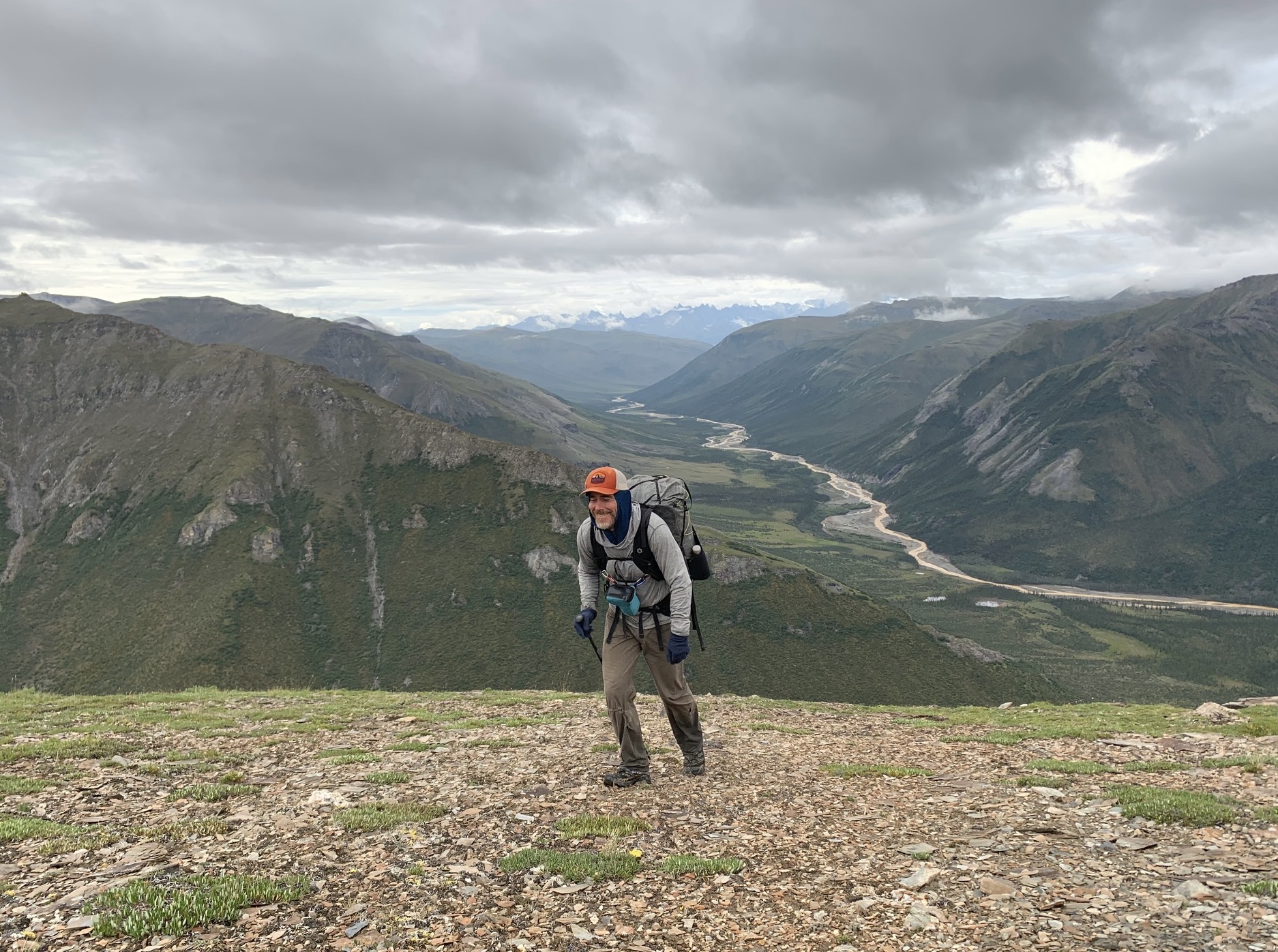
Climbing towards Dalimaloak Mountain with the Swift X during a multi-week trek through Alaska’s Brooks Range (August 2021).
At a Glance:
Price (Jan.2023): $350 / $375 (with vest harness)
Weight: 27 oz (frameless & regular shoulder straps) to 40 oz (vest harness & hip belt)
Volume: 56L Total (Updated Feb.2023 – 41L main body, 10L extension collar, 5L exterior pockets)
Pack Body Material: Liteskin LS21 or X-Pac VX21
Load Lifters: Yes
Closure: Roll-top with Y-strap and side-closing buckles.
Suggested Use: Ideal for folks with base weights between 10 and 15 lbs (4.5-6.8 kg) and/or hikers with even lower base weights that are heading out with more than a week’s food and/or two gallons (7.6 L) of water.
Maximum Weight Recommended: According to the SMD website, the load rating is 35 lbs (15.9 kg). In my experience, this is a slightly conservative estimate (see Internal Storage and Durability for details).
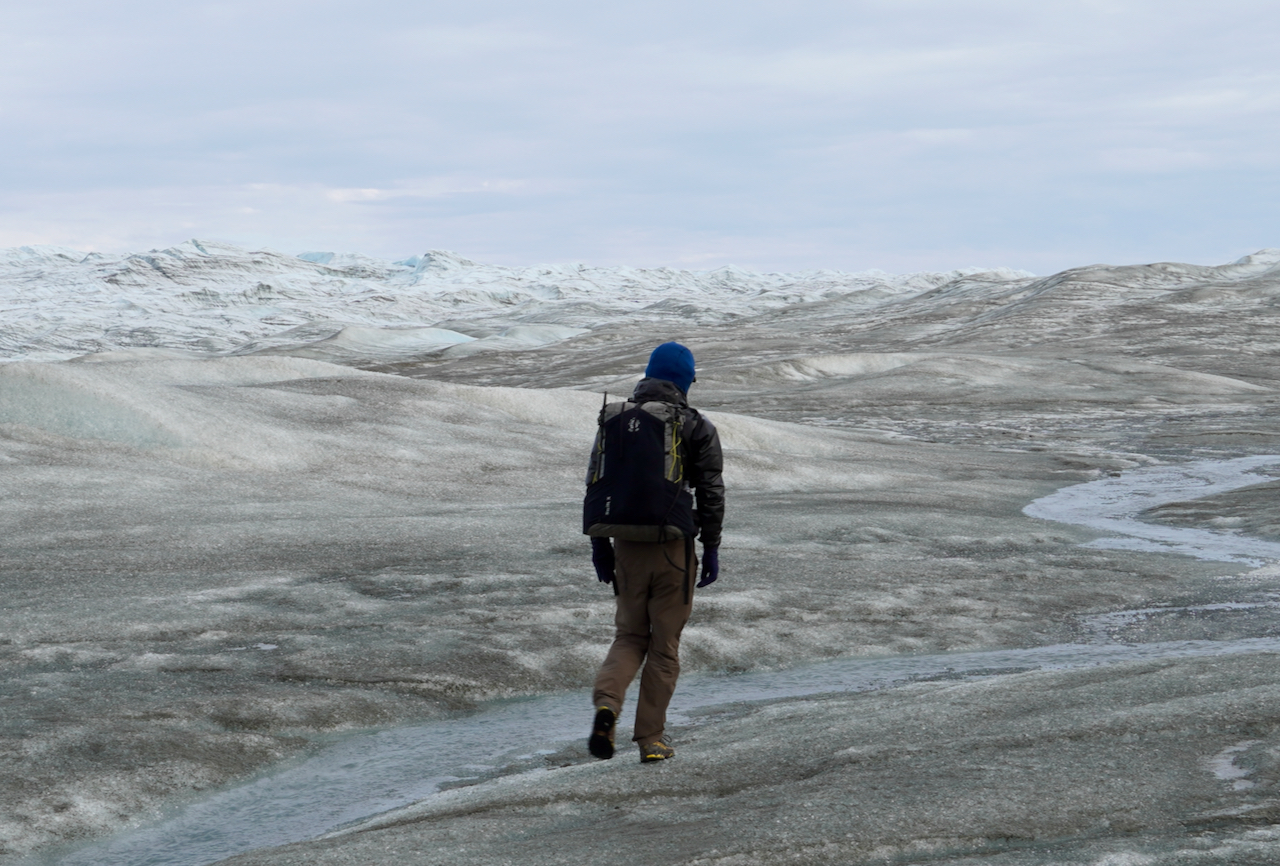
Yours truly on the Greenland Ice Cap – a not-to-be-missed supplemental section of the Arctic Circle Trail (September 2022).
Internal Storage:
The SMD website lists the internal storage volume for the Swift X as 41L for the main body and 10L for the extension collar. So what’s that translate to out in the field? An example of a standard load for the Swift X would be a week’s worth of food, a bear canister, a couple of liters of water, and all the gear necessary for a backpacking trip in which temps could potentially drop down to the mid-teens Fahrenheit (around -9°C) (Note: Based on a base weight of between 10 and 15 lbs/4.5-6.8 kg)
As far as a maximum load is concerned, in 2021, I carried 16 days of food (44 lbs/20 kg total weight) in the Swift X for a hike in Alaska’s Brooks Range. Suffice to say, the pack was filled to the brim – actually a little beyond – for the first day or two. Nonetheless, thanks to its excellent suspension system, the pack rode as comfortably as I could have hoped for, given the challenging terrain (Note: My base weight for this trip was around 11/12 lbs).
Bonus Feature: There’s a handy internal pocket that can fit your wallet, passport, keys, etc., all of which I’ll normally place inside a small LokSak baggie.

Greg “Malto” Gressel with his Swift X on Day 1 of our 7-day trek through Denali National Park (August 2021).
External Storage & Compression System:
The 2023 Swift X has switched from standard mesh pockets on the side and front of the pack to UltraStretch material. This is a solid upgrade – the UltraStretch is considerably more durable, which translates to more abrasion resistance and a decreased likelihood of snags/tears when rambling through overgrown environments.
As for the external attachment system, the Swift X uses a cord system to compress and stabilize your load on the sides of the pack. The top of the roll-top pack is secured with a y-strap and side-clipping buckles.
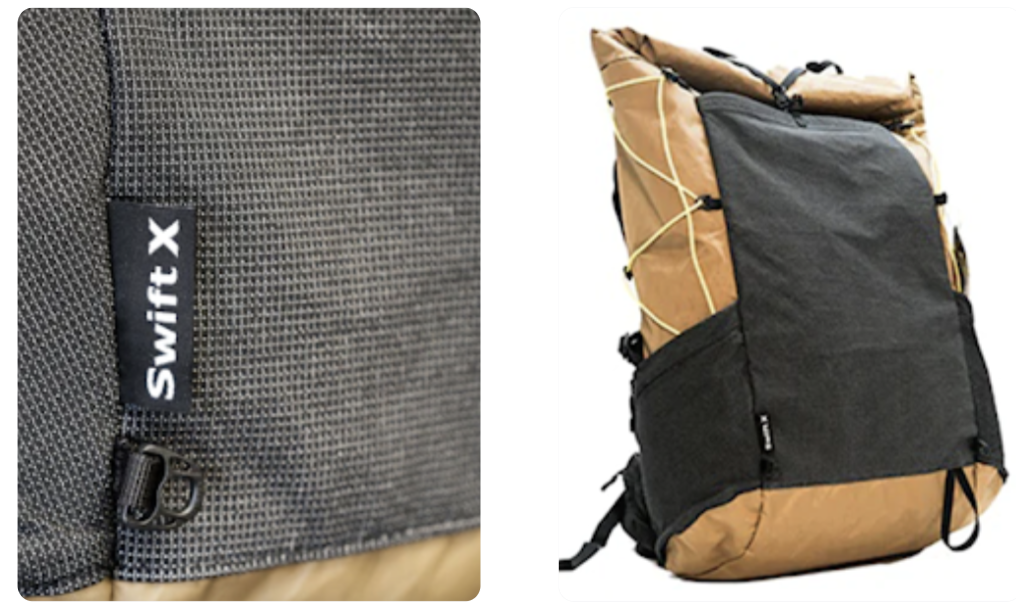
UltraStretch Pockets & Cord Compression System (Swift X/2023 Updated model)(Photos – Six Moon Designs)
Backpack Material Options:
There are two choices – Liteskin (LS21) or X-Pac (VX21). They cost the same, and the weights are almost identical. X-Pac is said to be marginally more abrasion-resistant and waterproof than the Liteskin model. That said, over the past three years, I’ve taken the Liteskin pack through a bunch of overgrown areas in the Sierra Madre and Alaska, and the material still looks fine. In short, go with whichever color you like best (i.e., Liteskin comes in grey, while the X-Pac is available in blue, black, and coyote brown).
(Note: Even though both Liteskin and X-Pac are excellent for shedding H20, you should still line your pack with a trash compactor bag. The reason? Water can seep through anywhere there is stitching/seams).
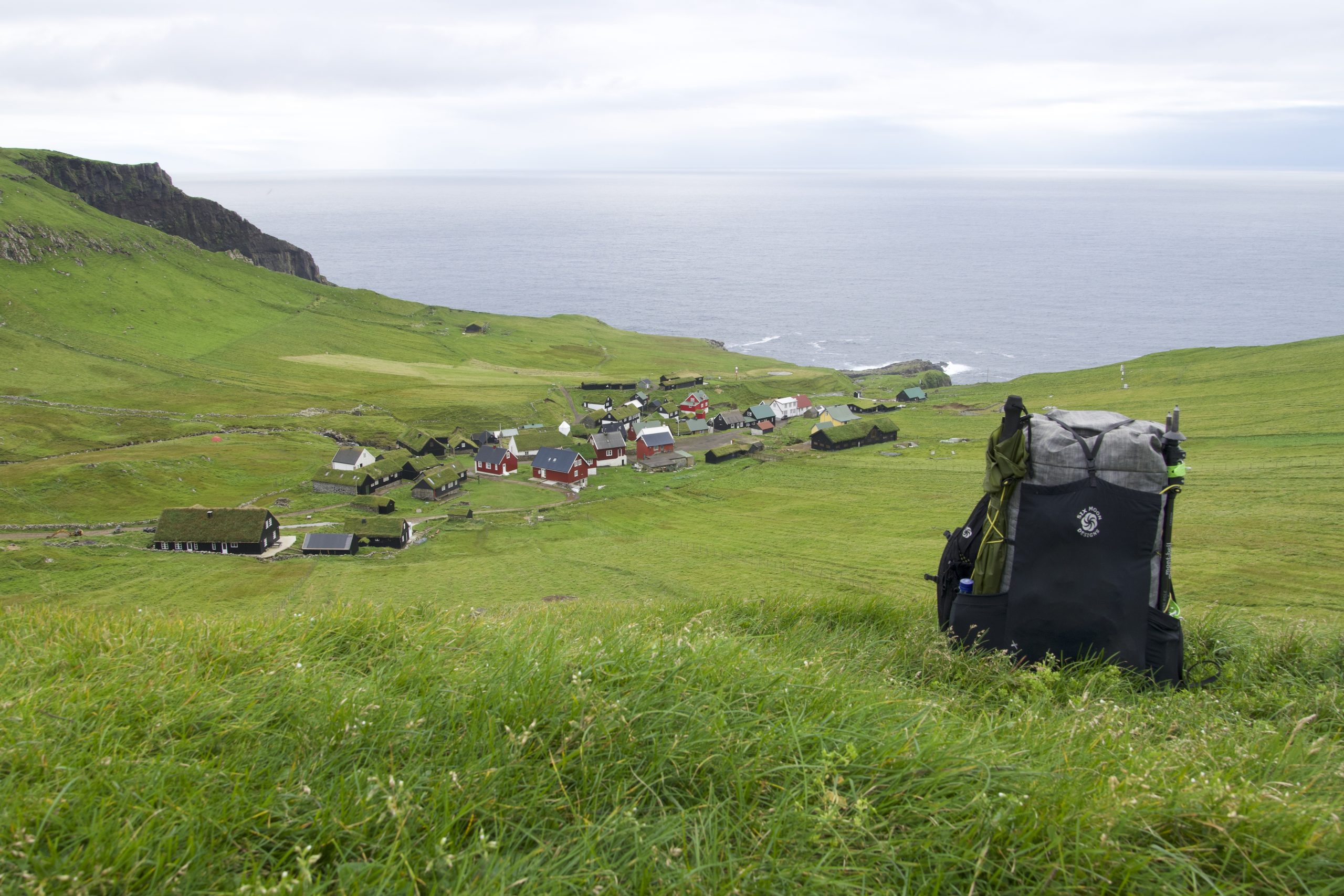
SMD Swift X on the island of Mykines, the westernmost point of the Faroe Islands (August 2022).
Internal Frame & Suspension System:
Internal Frame: A Derlin/fiberglass hoop stay that’s wide at the top and tapers down at the base, where it’s anchored to the lumbar area. The frame’s tapered shape helps promote ventilation on the sides of the pack (handy when hiking in muggy conditions) without sacrificing stability (Note: SMD refers to this as their “minimum contact back panel”).
Hip Belt: The Swift X includes an adjustable and removable two-tiered hip belt with standard-sized pockets that can fit a phone, snacks, or a small camera.
Load Lifters: Load lifters are mostly superfluous for ultralight loads. However, if you’re consistently hauling over 20 lbs/9 kg (which you probably will be if you’re purchasing the Swift X), giving them the occasional tweak can be helpful in minimizing tension build-up in specific areas of your upper body.
Shoulder Harness: There are three choices: 1. Standard shoulder straps; 2. S-Curve shoulder straps, and; 3. Vest harness. I recommend going with the third option, which is hands down the standout feature of the Swift X.
The running-style vest harness affords a torso-hugging fit, which helps mitigate unwanted pack movement. The snug fit is thanks to the vest’s six points of suspension (or connection), which apportion the load at the top, side, and bottom on each side of the pack. The excellent weight distribution and glove-like feel especially shine when negotiating challenging conditions such as river fords, snowfields, tussocks, blowdowns, or scree slopes. The vest harness features dual sliding chest straps and handy shoulder strap pockets, where I usually keep items such as sunscreen, hand sanitizer, lip balm, and phone.
Before the Swift X, I hadn’t tried a running-style vest harness on anything other than a daypack. However, after three years of using it for extended trips in challenging conditions, I’ve become a convert. Indeed, I don’t foresee going back to regular shoulder straps for backpacking journeys that include consistently heavy carries anytime soon (Note: For trips on which my total weight is generally under 20 lb/ 9 kg, I still prefer a frameless backpack such as my old favorites, the Mountain Laurel Designs Burn and Gossamer Gear Kumo).
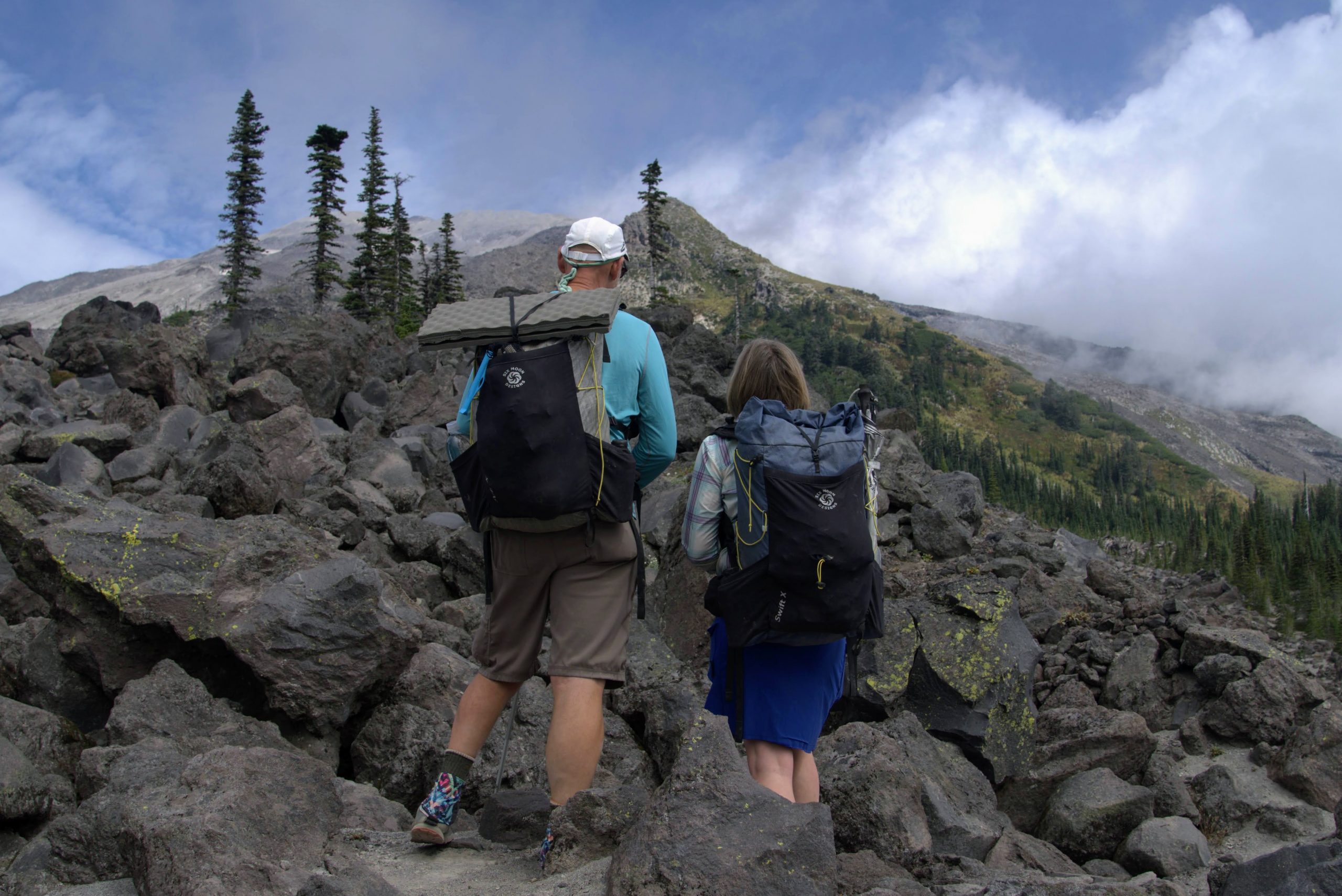
Serial thru-hikers and long-time friends, Naomi Hudetz and Mike Unger, carrying Swift X packs on Washington’s Loowit Trail (September 2021).
Durability:
Double thumbs up. As alluded to above, I’ve logged over 2,000 miles (3,219 km) with the Swift X over the past three years. Much of this distance has been covered with loads over 33 lb (15 kg). The stitching and the Liteskin material on the pack’s main body still look in great shape – just the odd scuff mark from scraping against rocky surfaces. There have been a couple of small tears in the mesh pockets, but nothing that couldn’t be patched up out in the field (Note: I have the pre-November 2022 model, which doesn’t have the UltraStretch material for the pockets).
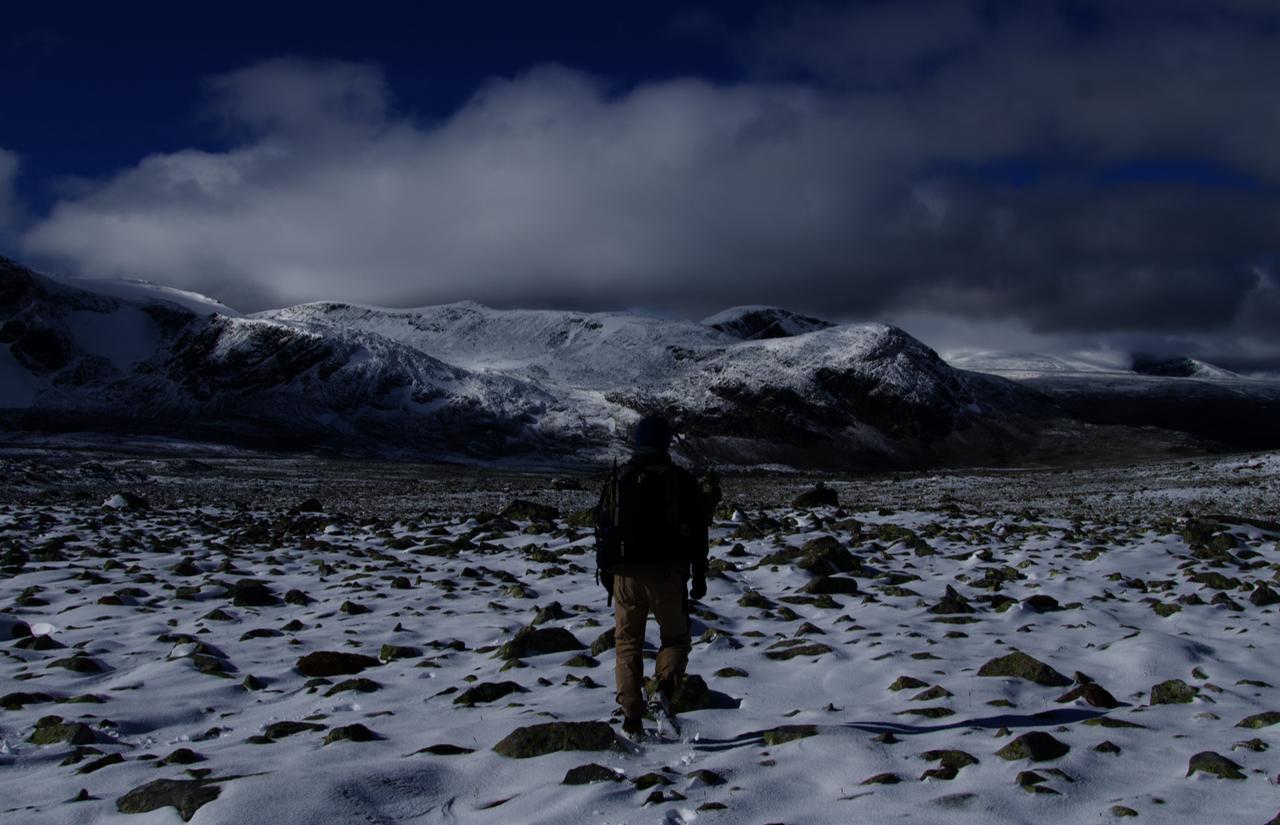
Crossing the Skautflye plateau during a loop hike around Norway’s Jotunheimen National Park (September 2022).
Recommendations & Notes:
1. When first using the vest harness, the straps can be a little fiddly. Note that unlike with other packs, the adjustment comes from the bottom up. Spend some time tweaking them until you find what works for you. The setting will vary according to the type of terrain you’re negotiating – uphill, downhill, flat, rugged off-trail, etc.
2. If you’re heading out for a weekend trip in relatively mellow terrain and your total pack weight is less than 20 lbs (9 kg), consider removing the hip belt (6.5 oz/184 gr) or replacing it with a simple bit of webbing strap (1-2 oz). The vest harness should provide all the stability you’ll require for lowish pack weights.
3. There is plenty of room to fit a bear canister inside the Swift X. Fill it with your food and/or other heavier items and place it above your sleeping bag in the middle of your pack. “Can I strap it to the top of the pack?” You could, but you shouldn’t, as it can potentially hinder your balance/stability, particularly when negotiating challenging terrain and/or river crossings. Indeed, if the height of your pack is above your head, it’s generally a sign you’re carrying too much stuff.
4. The Swift X is a thoughtfully designed backpack made with high-end materials. If you fancy picking one up, but the $350/375 price tag is more than you want to spend, consider its sibling, the Swift V. It’s basically the same pack, made with more cost-effective Robic nylon fabric.
5. I’ve always appreciated companies that listen to feedback from folks who have taken their equipment through the backcountry wringer. Case in point: Six Moon Designs. In early 2020, they gave me a Swift X when they heard I was heading up to Alaska for a couple of long hikes. They asked for my opinion on the pack’s performance when heavily loaded in challenging conditions. As you will have guessed if you’ve read the whole review, my evaluation was overwhelmingly positive. However, I also had some small suggestions, such as the addition of side-closing buckles and the enlargement of the interior pocket (specifically, so it could fit passports), which they took on board and subsequently adopted (in addition to upgrading to a more durable material for the exterior pockets). On a lighter note, I may have even channeled my inner-John Candy and mentioned that I’d bet “six bucks and my right nut” that their previous internal volume figures of 38L for the main body and 6L for the extension collar were a wee bit on the low side (Note: The current figures of 41L and 10L strike me as being much closer to the mark).

Rambling through Gates of the Arctic/Brooks Range, Alaska (August 2021).
Conclusion:
According to the SMD website, the Swift X was “designed with thru-hiking in mind.” With its combination of durability, lightweight, high degree of configurability, and carrying comfort when filled with heavy loads, I’d say they’ve hit the mark. However, the Swift X also provides an excellent all-around option for occasional backpackers or even folks who are relatively new to the sport. Whether you’re heading out for an overnighter, a long weekend, or a week-long trip with friends, the chameleon-like Swift X can be customized to suit your needs.

Naomi Hudetz and her Swift X on California’s Redwood Creek Trail (September 2021).
Comparable Lightweight Backpacks (w. internal frame)
Related Articles
Disclaimer: I was given the Swift X in early 2020 by the folks at SMD when they heard I was heading up to Alaska. They asked for my feedback on the pack, along with a few photos from the journey (both of which I provided). I was under no obligation to write a review, and the opinions expressed above are my own.
Disclosure: This post contains some affiliate links, which means The Hiking Life receives a small commission if you purchase an item after clicking on one of the links. This comes at no additional cost to the reader and helps to support the website in its continuing goal to create quality content for backpackers and hikers.
Discover more from The Hiking Life
Subscribe to get the latest posts sent to your email.


